Sharks follow the Learn to Swim plan for Teaching Swimming, below are details of each class together with the standard a swimmer has to reach in order to move on to the next class and a timetable of classes.
Learn to Swim Stage 1 – Minnow
This class does widths in the learner pool between 18:00 and 18:30 on a Friday.
By completing this Award, with or without flotation equipment or support, you will be able to:
 |
1 Enter the water safely. 2 Move forward for a distance of 5 metres, feet may be on or off the floor. 3 Move backwards for a distance of 5 metres, feet may be on or off the floor. 4 Move sideways for a distance of 5 metres, feet may be on or off the floor. 5 Scoop the water and wash the face. 6 Be comfortable with water showered from overhead. 7 Move from a flat floating position on the back and return to standing. 8 Move from a flat floating position on the front and return to standing. 9 Push and glide in a flat position on the front from a wall. 10 Push and glide in a flat position on the back from a wall. 11 Give examples of two pool rules. 12 Exit the water safely. |
Stage 2 – Catfish
This class does widths in the learner pool between 17:30 and 18:00 on a Friday.
By completing this Award, with or without floatation equipment or support, you will be able to:
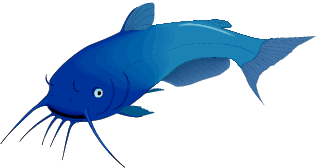 |
1 Jump in from poolside safely to a minimum depth of 1.0 metre. 2 Blow bubbles a minimum of three times rhythmically, with nose and mouth submerged. 3 Move from a flat floating position on the back and return to standing without support. 4 Move from a flat floating position on the front and return to standing without support. 5 Push from a wall and glide on the back – arms can be by the side or above the head. 6 Push from a wall and glide on the front with arms extended. 7 Travel using a recognised leg action with feet off the pool floor on the back for 5 metres. 8 Travel using a recognised leg action with feet off the pool floor on the front for 5 metres. 9 Perform a tuck to rotate from a flat floating position on the front, to a back floating position, then return to standing. 10 Perform a tuck to rotate from a flat floating position on the back, to a front floating position, then return to standing. 11 Perform a log roll from the back to the front. 12 Perform a log roll from the front to the back. 13 Exit the water without support. |
Stage 3 – Elfin
This class does lengths in the learner pool between 18:30 and 19:00 on a Friday.
By completing this Award, without floatation equipment or support, you will be able to:
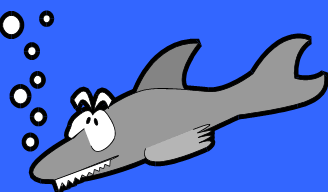 |
1 Jump in from poolside and submerge to a minimum depth of 1.0 metre. 2 Sink, push away from wall and maintain a streamlined position. 3 Push and glide on the front with arms extended and log roll onto the back. 4 Push and glide on the back with arms extended and log roll onto the front. 5 Travel 5 metres on the front, perform a tuck to rotate onto the back and return on the back 6 Fully submerge to pick up an object. 7 Answer correctly three questions on the Water Safety Code. 8 Push and glide and travel 10 metres on the back. 9 Push and glide and travel 10 metres on the front. 10 Perform a tuck float and hold for three seconds. 11 Exit the water without using steps. |
Stage 4 – Hammerhead
This class does lengths between 18:30 and 19:30 on a Friday.
By completing this Award, without floatation equipment or support, you will be able to:
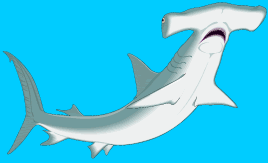 |
|
Stage 5 – Marlin
This class does lengths between 18:30 and 19:30 on a Friday and may also train on a Sunday 16:30 to 18:00.
By completing this Award, you will be able to
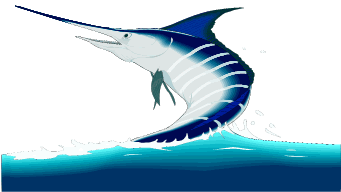 |
1 Perform a flat stationary scull on the back. 2 Perform a feet first sculling action for 5 metres in a flat position on the back. 3 Perform a sculling sequence with a partner for 30-45 seconds to include a rotation. 4 Tread water for 30 seconds. 5 Perform three different shaped jumps into deep water. 6 Push and glide and swim 10 metres backstroke (performed to Swim England expected standards). 7 Push and glide and swim 10 metres front crawl (performed to Swim England expected standards). 8 Push and glide and swim 10 metres breaststroke (performed to Swim England expected standards). 9 Push and glide and swim 10 metres butterfly (performed to Swim England expected standards). 10 Perform a handstand and hold for a minimum of three seconds. 11 Perform a forward somersault. 12 Demonstrate an action for getting help. |
Stage 6 – Great White (currently combined with Marlin)
This class does lengths between 18:30 and 19:30 on a Friday and may also train on a Tuesday 18:00 to 19:30
By completing this Award, you will be able to:
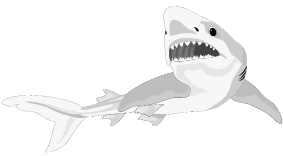 |
1 Give two examples of how to prepare for exercise and understand why it is important. 2 Sink, push off on side from the wall, glide, kick and rotate into backstroke. 3 Sink, push off on side from the wall, glide, kick and rotate into front crawl. 4 Swim 10 metres wearing clothes. 5 Push and glide and swim front crawl to include at least six rhythmical breaths. 6 Push and glide and swim breaststroke to include at least six rhythmical breaths. 7 Push and glide and swim butterfly to include at least three rhythmical breaths. 8 Push and glide and swim backstroke to include at least six regular breaths. 9 Push and glide and swim 25 metres, choice of stroke is optional (performed to Swim England expected standards). 10 Perform a ‘shout and signal’ rescue. 11 Perform a surface dive. |
Transition Squad
The transition squad train three days a week, see times below.
In order to move into junior squad the swimmer must be component in all four strokes and be able to swim 8 x 100 metres in 2 minute 15 seconds which means the swimmer must be able to swim 100 metres within the time of 2 minute 15 seconds and be able to achieve this on 8 repeats in a continuous set. Testing is done during squad training.
Junior Squad
The junior squad train five days a week, see times below.
In order for a swimmer to move up into the Senior Squad the swimmer must achieve the 200 metres freestyle time and one other time, as shown below:
| Gender | Stroke | Time In Minutes |
| Boys | 200m Freestyle | 2.55 |
| Girls | 200m Freestyle | 3.00 |
| Boys | 200m Backstroke | 3.15 |
| Girls | 200m Backstroke | 3.20 |
| Boys | 200m Breaststroke | 3.40 |
| Girls | 200m Breaststroke | 3.45 |
| Boys | 200m Butterfly | 3.25 |
| Girls | 200m Butterfly | 3.30 |
The swimmer must also be able to swim 15 x 100 metres in 1 minute 50 seconds which means the swimmer must be able to swim 100 metres within the time of 1 minute 50 seconds and be able to achieve this on 15 repeats in a continuous set.
Testing is done during squad training and the times can be achieved in competition or in time trials.
Senior Squad
The senior squad train five days a week, see times below.
Masters Squad
The club have a small masters club for over-18s who wish to continue swimming and help with the club, the masters squad train twice a week, see times below.
Timetable
| Mondays – Squads | 6.00 – 7.30 pm | Junior / Senior / Masters | Main Pool |
| Tuesdays – Squads | 6.00 – 7.30 pm | Great White / Transition / Junior / Senior | Main Pool |
| Wednesdays – Squads | 6.00 – 7.30 pm | Junior / Senior / Masters | Main Pool |
| Fridays – Minnow | 6.00 – 6.30 pm | Stage 1 Non-Swimmers | Learner Pool |
| Fridays – Catfish | 6.00 – 6.30 pm | Stage 2 Beginners | Learner Pool |
| Fridays – Elfin | 6.30 – 7.00 pm | Stage 3 Swimmers | Learner Pool |
| Fridays – Hammerhead | 6.30 – 7.30 pm | Stage 4 Swimmers | Main Pool |
| Fridays – Marlin | 6.30 – 7.30 pm | Stage 5 Swimmers | Main Pool |
| Fridays – Great White | 6.30 – 7.30 pm | Stage 6 Swimmers | Main Pool |
| Fridays – Squads | 7.30 – 8.45 pm | Transition / Junior / Senior / Masters | Main Pool |
| Sunday – Squads | 4.30 – 6.00 pm | Marlin / Transition / Junior / Senior | Main Pool |
